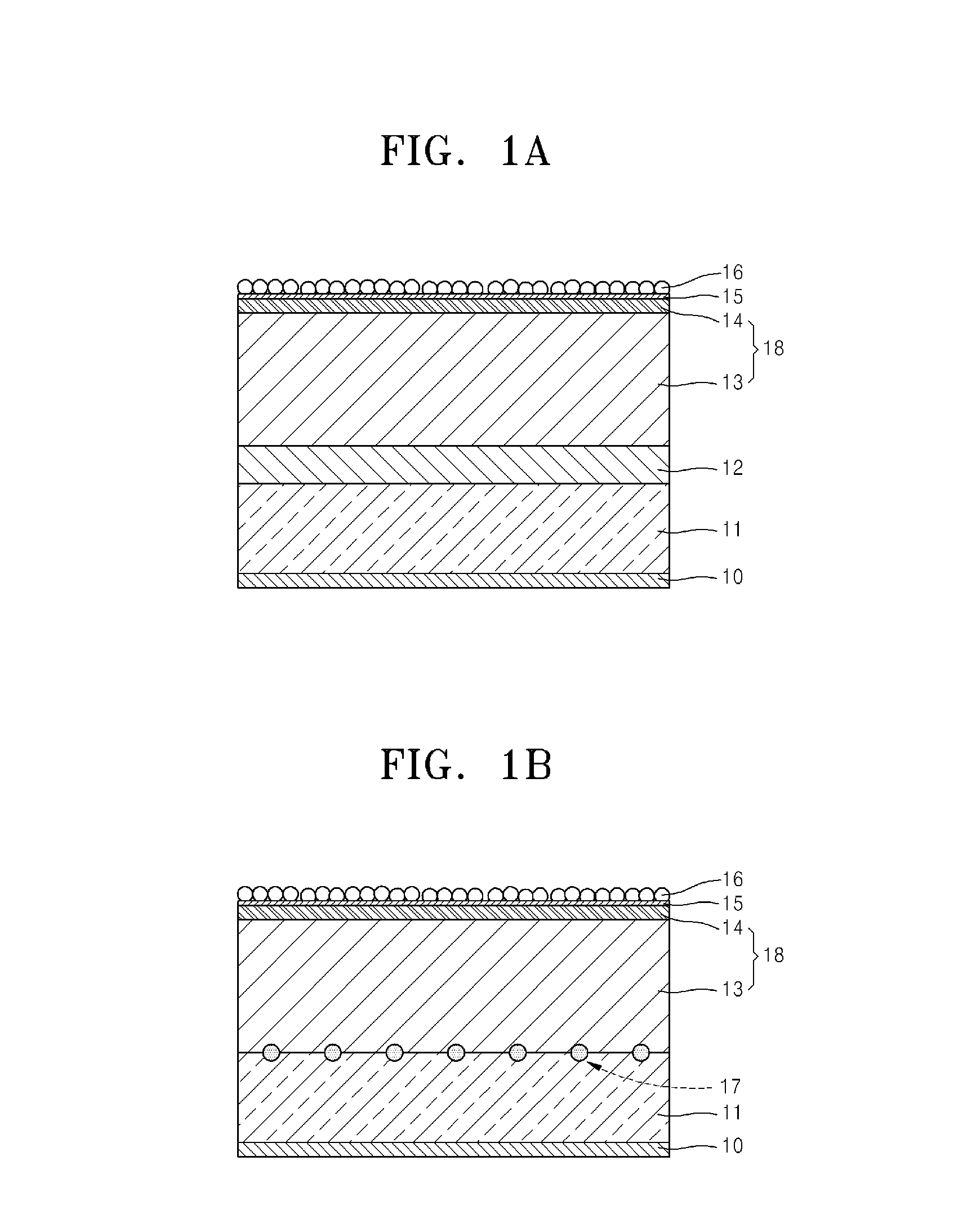Composite protective layer for photoelectrode structure, photoelectrode structure including the composite protective layer, and photoelectrochemical cell including photoelectrode structure
a technology of photoelectrode structure and composite protective layer, which is applied in the direction of electrochemical cell, energy input, electrochemical coating, etc., can solve the problem of limit in using semiconductor materials capable of exerting better photoelectric efficiency, and achieve the effect of improving the lifespan of the photoelectrode structur
- Summary
- Abstract
- Description
- Claims
- Application Information
AI Technical Summary
Benefits of technology
Problems solved by technology
Method used
Image
Examples
example 1
Manufacturing a Photoelectrode Structure
[0136]An FTO film formed on a glass substrate was used as an electrode. On the FTO film, Cu2O was deposited to form a light absorbing layer having a thickness of about 5 μm. After the light absorbing layer was treated with hydrogen peroxide to remove organic material on a surface of the light absorbing layer, the light absorbing layer was heat treated at a temperature of about 450° C. for about 30 minutes under a vacuum condition.
[0137]On the light absorbing layer, a hole blocking layer having a thickness of about 70 nm was formed by sputtering TiO2 and thus an FTO film (hereinafter, an FTO glass film) / a Cu2O film / a TiO2 structure formed on the glass substrate was manufactured.
[0138]Separately, on a Cu foil physical protective layer having a thickness of about 20 μm, Ta was deposited to form a Ta chemical protective layer having a thickness of about 100 nm, to thereby form a composite protective layer (Ta thin film chemical protective layer / Cu...
example 2
Manufacturing a Photoelectrode Structure (a Photoanode)
[0141]A composite protective layer was formed by laminating a Ta film where Ta is deposited in a thickness of 100 nm and a Cu foil having a thickness of 20 μm. A Cu foil of the composite protective layer was bonded to an In foil using a roll press, and a structure of In layer / Cu foil / Ta thin film / Ta native oxide film was obtained.
[0142]The In layer of the In layer / Cu foil / Ta thin film / Ta structure was bonded to a p-type silicon layer of the light absorbing layer wherein an n-type silicon layer and the p-type silicon layer are sequentially laminated, and pressurized at a temperature of about 200° C. to form a structure including an n-type silicon layer / p-type silicon layer / In layer / Cu foil / Ta thin film / Ta native oxide film.
[0143]On a Ta native oxide film of the n-type silicon layer / p-type silicon layer / In layer / Cu foil / Ta thin film / Ta native oxide film structure, a Co3O4 catalyst was deposited to form a Co3O4 layer to form an n-t...
PUM
| Property | Measurement | Unit |
|---|---|---|
| electrical conductivity | aaaaa | aaaaa |
| thickness | aaaaa | aaaaa |
| thickness | aaaaa | aaaaa |
Abstract
Description
Claims
Application Information
 Login to View More
Login to View More - R&D
- Intellectual Property
- Life Sciences
- Materials
- Tech Scout
- Unparalleled Data Quality
- Higher Quality Content
- 60% Fewer Hallucinations
Browse by: Latest US Patents, China's latest patents, Technical Efficacy Thesaurus, Application Domain, Technology Topic, Popular Technical Reports.
© 2025 PatSnap. All rights reserved.Legal|Privacy policy|Modern Slavery Act Transparency Statement|Sitemap|About US| Contact US: help@patsnap.com



